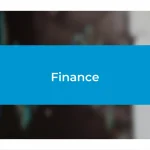Key takeaways:
- Effective nonprofit budgeting involves storytelling with numbers and aligning financial goals with organizational values and priorities.
- Engaging stakeholders and team members in budget discussions fosters accountability, creativity, and a shared sense of purpose.
- Regularly monitoring and adjusting the budget based on real-time data enhances adaptability and ensures alignment with changing circumstances.
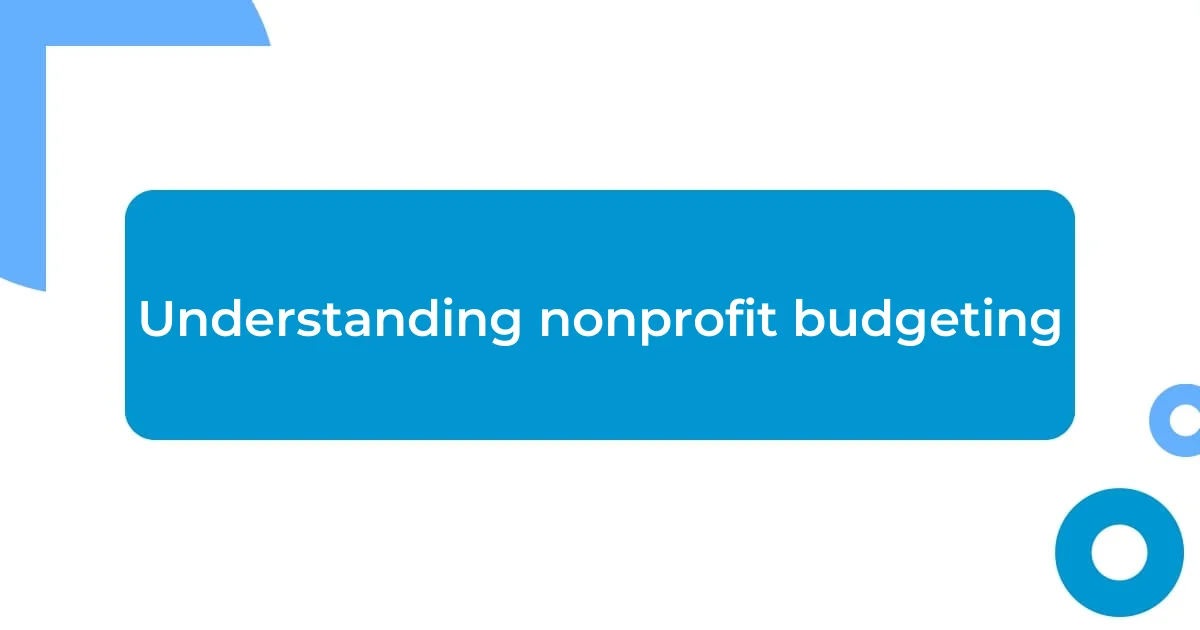
Understanding nonprofit budgeting
Understanding nonprofit budgeting is essential for any organization looking to maximize its impact. When I first delved into nonprofit budgeting, I realized it’s not just about crunching numbers. It’s about telling a story with those numbers—your story. Each line item reflects your mission and the heart of your organization.
One of the most eye-opening experiences for me was when I attended a budgeting workshop. I walked in thinking it would be all about spreadsheets and financial jargon, but what I found was a community of people wrestling with the same challenges. Budgeting, much like fundraising, requires a blend of strategy and passion. How do we balance our dreams with our financial realities? This question often leads me to reassess not only my goals but the very foundation of how we budget.
I’ve learned that a successful nonprofit budget should lay out not only the numbers but also our priorities and values. For instance, allocating funds toward capacity building can sometimes feel like a gamble, but I’ve witnessed firsthand the transformative impact it can have on our organization’s effectiveness. Isn’t it rewarding when you discover that a small investment today can lead to significant growth tomorrow? Understanding your budget is about finding that balance between what you wish to accomplish and the resources at hand.
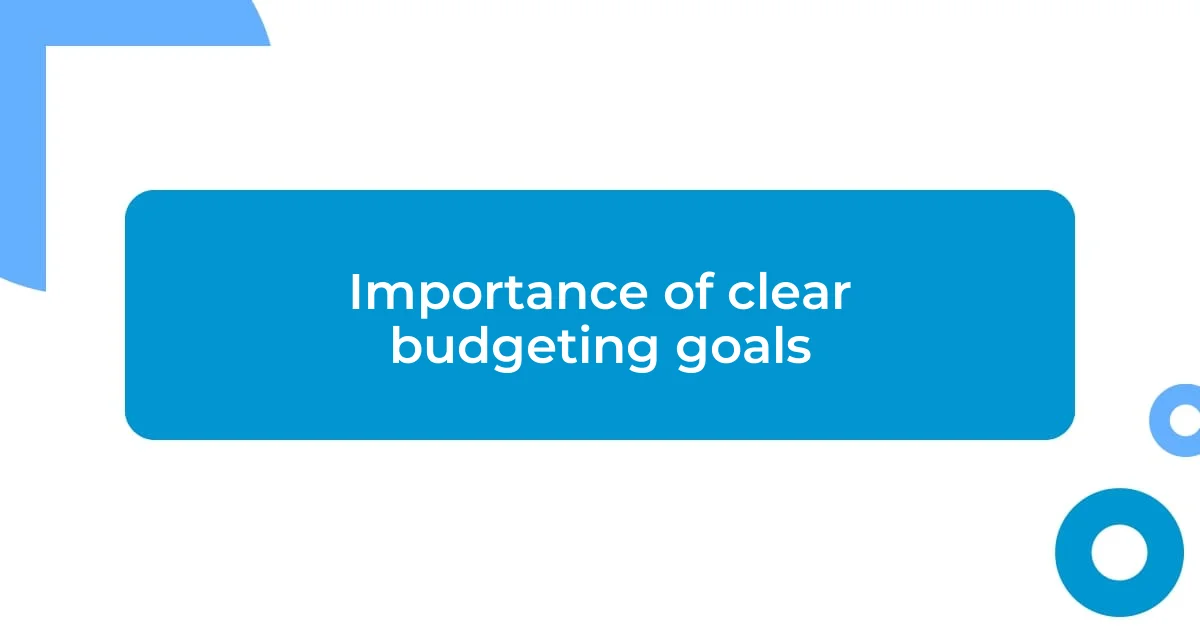
Importance of clear budgeting goals
Clear budgeting goals are critical in guiding nonprofit organizations toward their mission. Without them, it’s easy to lose focus on what truly matters. I remember a time when our team didn’t set specific goals; we found ourselves straying from our original mission, resulting in confusion about where to allocate funds. I often reflect on how clear goals could have helped us maintain direction and purpose.
When I finally learned to establish distinct budgeting goals, the transformation was remarkable. For instance, we decided to prioritize community engagement in our funding allocation. This clarity not only energized our team but also enhanced our outreach effectiveness. It felt fantastic to see everyone working cohesively towards a shared vision, fueled by a clear understanding of our financial priorities.
A well-defined budgeting goal also fosters accountability. I’ve seen how it encourages team members to take ownership of their roles and responsibilities, making them more invested in organizational success. When everyone knows how their contributions align with the goals, it creates a sense of collective purpose that significantly boosts morale and productivity.
| Aspect | Importance of Clear Budgeting Goals |
|---|---|
| Direction | Helps maintain focus on mission and priorities |
| Team Alignment | Encourages cohesive work towards shared objectives |
| Accountability | Fosters ownership among team members |
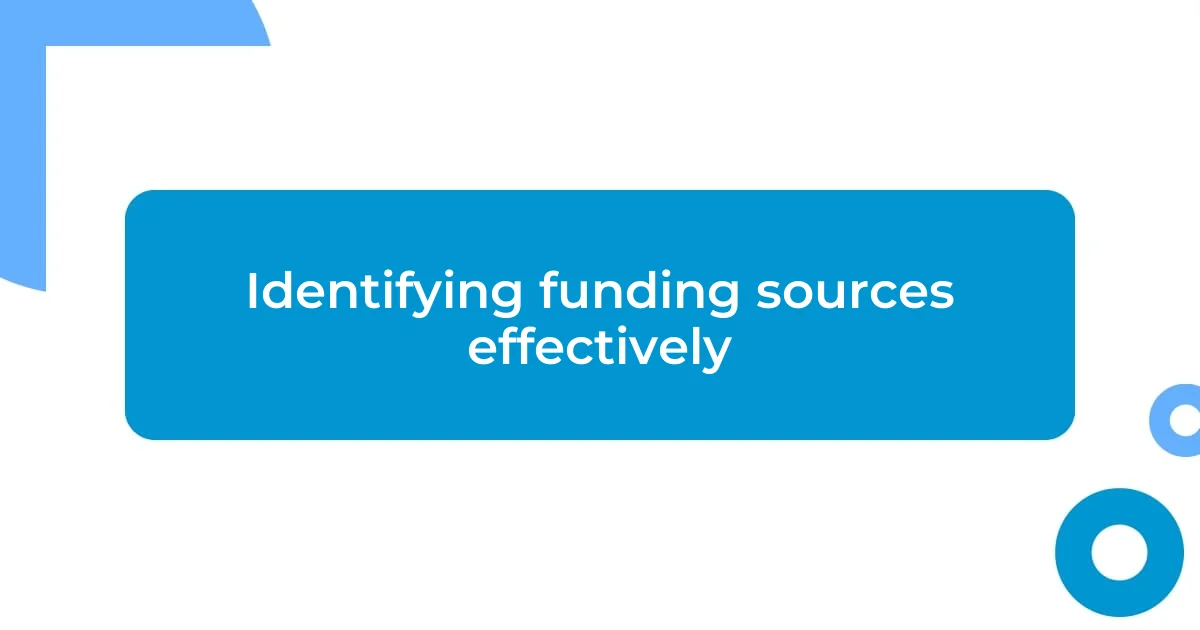
Identifying funding sources effectively
Identifying funding sources effectively can sometimes feel like searching for a needle in a haystack. In my experience, the key is to cast a wide net while honing in on who aligns with your mission. A memorable moment for me was when I decided to tap into local businesses for sponsorships. By sharing our vision over coffee, I discovered how many were eager to invest in community projects. It reminded me that sometimes, a simple conversation can unearth valuable partnerships.
- Explore community foundations, as they often support local initiatives.
- Engage with your network; your board members might have connections to potential funders.
- Utilize social media platforms to highlight stories that resonate, attracting attention from interested donors.
- Look into government grants tailored for nonprofit organizations in your area.
- Identify corporate social responsibility (CSR) initiatives that align with your organization’s goals.
As I refined my approach to funding sources, I realized it’s about not only finding money but discovering allies in our mission. After attending a local meetup, I was introduced to a grant writer who specialized in our sector. This connection turned out to be more than just a resource; she became a champion for our cause, offering insights that legitimatized our program’s goals. Keeping an open mind and staying persistent has brought unexpected funding opportunities my way, and that’s a lesson I carry with me every day.
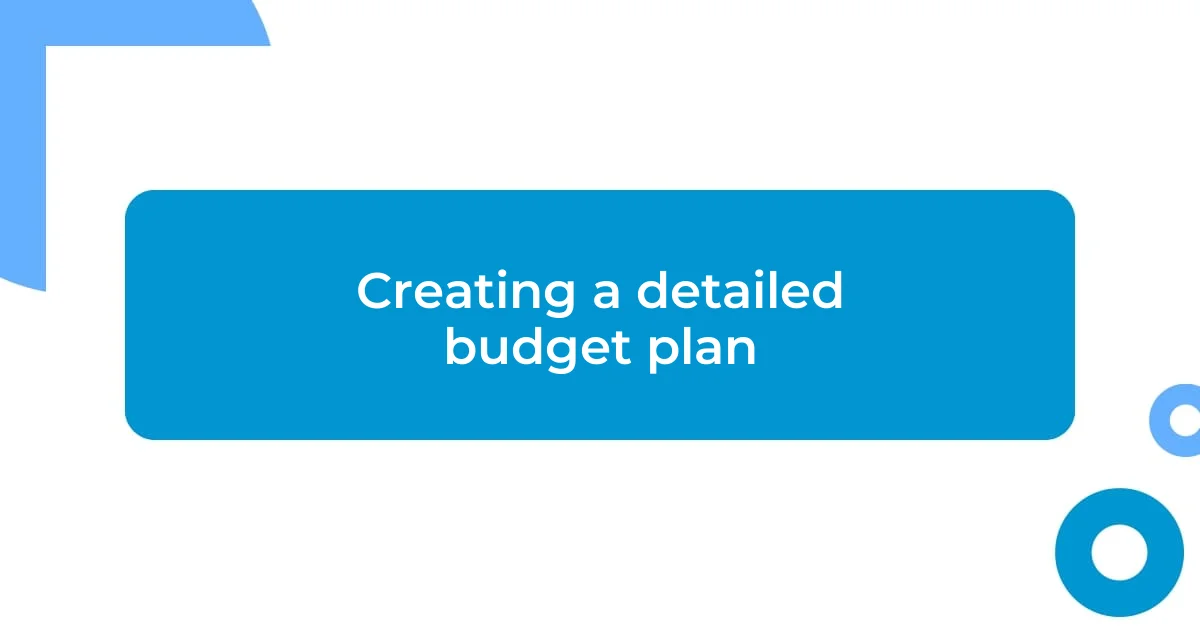
Creating a detailed budget plan
Creating a detailed budget plan is like painting a map for your organization; it guides your journey and helps you navigate through financial decisions. I remember the first time I sat down to outline a comprehensive budget. It was daunting, but breaking it down into sections—like programs, overhead, and fundraising—made it manageable. I found it incredibly satisfying to see everything laid out plainly, which also gave me a sense of control I hadn’t felt before.
One essential tip I’ve learned is to involve your team in the budgeting process. Including different perspectives can uncover hidden costs or opportunities you might overlook on your own. I’ll never forget when our program manager pointed out an emerging community need that we hadn’t planned for. By incorporating that feedback, we adjusted our budget to allocate funds toward that initiative, which ultimately strengthened our impact. Can you imagine the missed opportunity if we hadn’t included the team?
Tracking expenditures throughout the year is just as important as planning ahead. I once neglected this, thinking our initial budget would suffice, and it led to overspending in several areas. By routinely revisiting the budget and comparing it against actual spending, I now feel more informed and able to make adjustments when necessary. It’s all about staying engaged with the numbers; after all, a budget is not a static document but a living representation of our goals and resources.
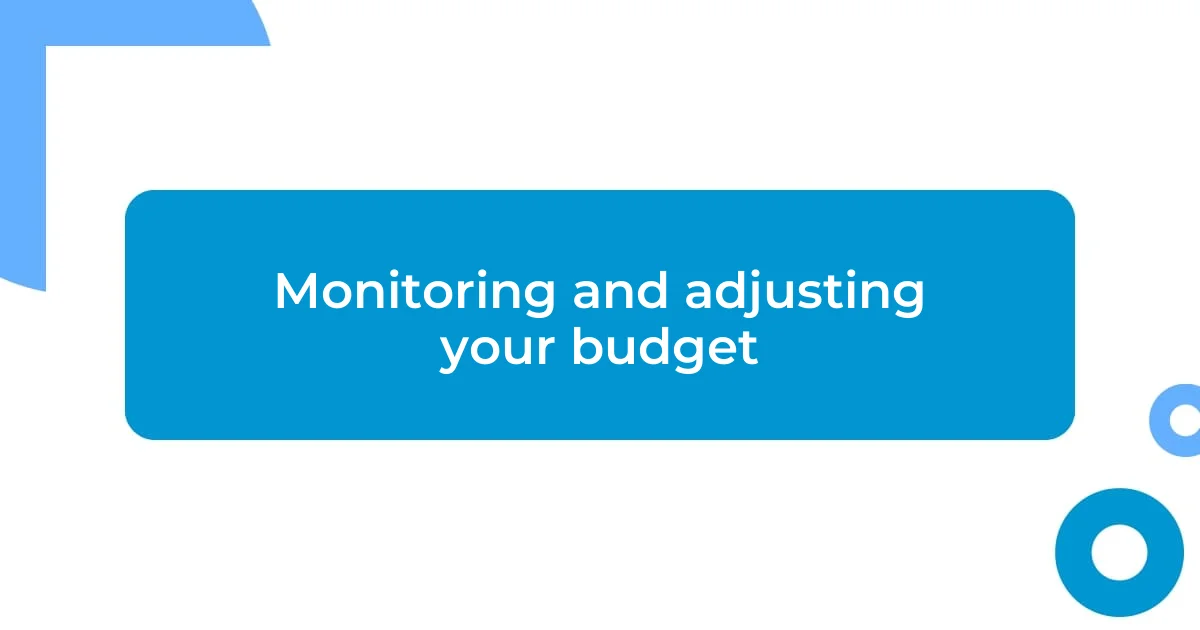
Monitoring and adjusting your budget
Monitoring your budget is like keeping a pulse on your organization’s financial health. I recall a time when I hesitated to make necessary adjustments, thinking it would disrupt our plans. However, when I finally acknowledged the need for flexibility, I found that minor tweaks led to significant improvements in our resource allocation. Isn’t it fascinating how a small change can have a ripple effect on achieving your mission?
Regular check-ins with your budget are crucial. I remember instituting monthly budget reviews with my team, and it transformed the way we approached our finances. Each meeting felt like a team huddle, where we could openly discuss overspending and upcoming expenses. This transparency not only built trust but also gave everyone a sense of ownership over our goals. Have you ever experienced that moment of clarity when discussing numbers as a team? It can be empowering!
Another vital aspect of monitoring is being open to adjustments based on real-time data. Last year, I noticed a dip in our fundraising revenues midway through the year. Instead of sticking to our original spending plan, we pivoted our strategy, reallocating funds toward enhancing our digital campaigns. It was a bit nerve-wracking, but we ultimately exceeded our revised revenue goals. Have you ever had to shift gears in your budgeting? Those moments teach us that adaptability is one of our most valuable tools in nonprofit finance management.
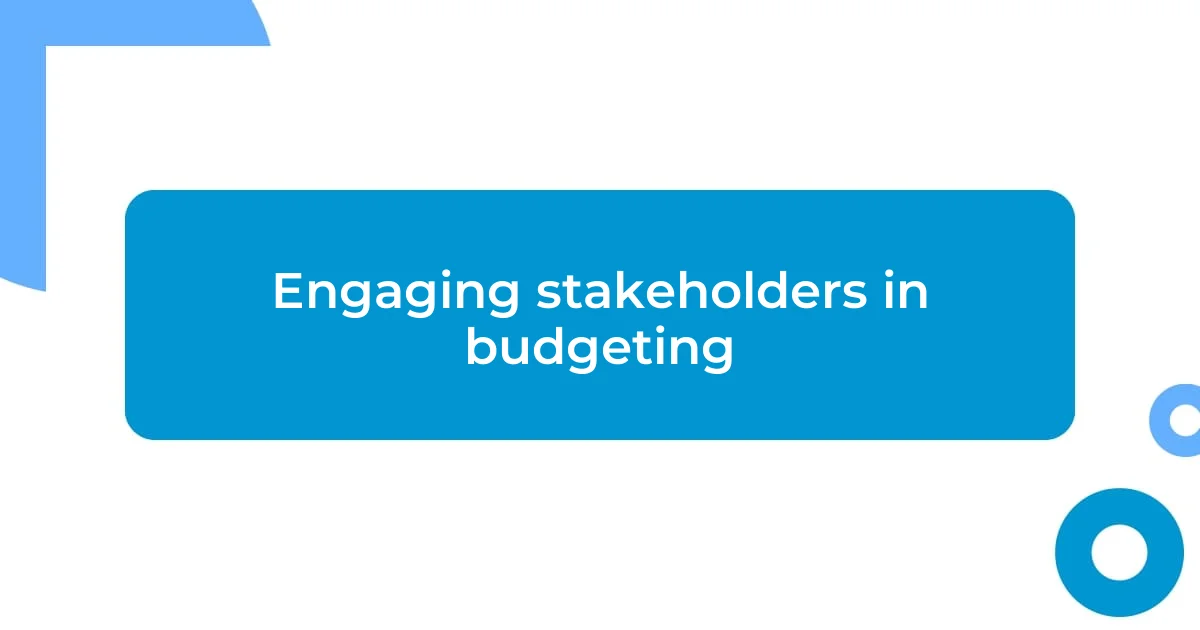
Engaging stakeholders in budgeting
Engaging stakeholders in the budgeting process is vital for fostering a sense of ownership and accountability within the organization. When I first started involving board members and program leads in budget discussions, it was eye-opening. Their insights were not just valuable; they often sparked ideas I hadn’t even considered. Have you ever experienced that “aha” moment when someone offers a perspective that changes everything? It reinforces how collective experiences can lead to better outcomes.
Another impactful strategy has been to hold informal brainstorming sessions with stakeholders. For example, I once organized a casual lunch meeting with our volunteers to talk about our budget priorities. The energy in the room was infectious; everyone was eager to share their thoughts about where resources were needed most. This not only generated innovative ideas but also deepened their connection to our mission. Isn’t it amazing how a simple conversation can foster engagement and loyalty?
Furthermore, I’ve found that transparency goes a long way in reassuring stakeholders. By sharing our financial goals and showing how their contributions directly impact our budget, I’ve created a culture of trust and collaboration. One time, after presenting a budget outline to the staff, a volunteer approached me and expressed how connected they felt to our mission after understanding the financial landscape. This experience taught me that when stakeholders see the bigger picture, they are more inclined to support the initiatives we prioritize. What strategies have you found effective in keeping your stakeholders engaged?
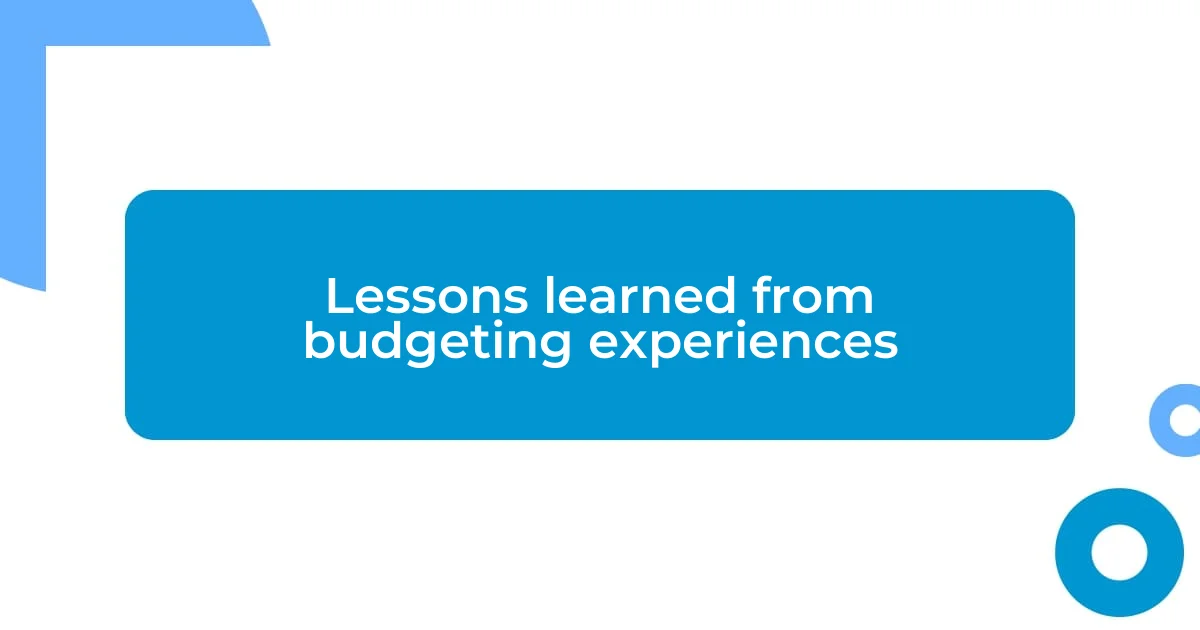
Lessons learned from budgeting experiences
Through my budgeting experiences, I’ve learned that setting realistic expectations is essential. Early on, I was overly optimistic and created a budget that didn’t reflect our actual capacity. That led to frustration when we couldn’t meet our targets. I’ve since learned to align our financial goals with what we can realistically achieve. Have you ever found yourself overestimating what you can accomplish? Reality-checking those assumptions can save a lot of heartache down the road.
Collaboration with my finance team has been another revelation. I vividly remember one budget planning session where we hashed out potential expenses over a cup of coffee, and it turned into a brainstorming marathon. By fostering open communication, I uncovered some hidden costs I hadn’t accounted for and identified innovative funding ideas from my team’s perspectives. Engaging in a dialogue like that can spark creativity; have you ever stumbled upon a solution simply through conversation?
Lastly, I want to emphasize the importance of reflecting on past budgets as learning opportunities. Each time a fiscal year ends, I take the time to analyze what worked and what didn’t. I recall feeling disheartened after a grant fell short but later realized that it was an opportunity to diversify our funding sources. Transforming setbacks into strategic insights has become a guiding principle for me. Have you taken the time to learn from your budgeting experiences? Each lesson, however painful, is a step forward in refining your approach.













